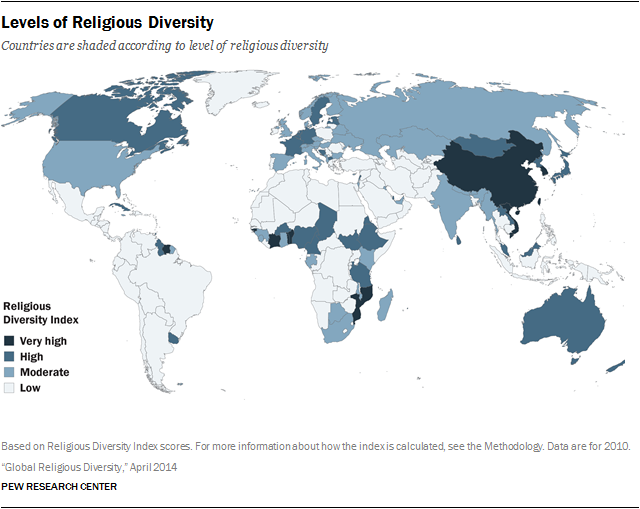Brian J. Grim, Ph.D. (葛百彦)
A Pew Research Center religious diversity study – based on methodology I developed with Todd Johnson – finds that about one-in-three people live in countries with high religious diversity (also see Chapter 3 in our book, The World’s Religions in Figures).
While the majority of the world’s countries (59%) have relatively low religious diversity, because many countries with low diversity have small populations, only a third (33%) of the world’s people live in them according to the study. About a third (32%) of the world’s people live in countries with moderate religious diversity and another third (35%) live in countries with high or very high religious diversity.
China has a very diverse mixture of the eight major religious groups counted in the Pew study: Buddhists (18.2%), Christians (5.1%), unaffiliated (52.2%), Muslims (1.8%), other religions (0.7%), Hindus (<1%), folk religionists (21.9%) and Jews (<1%).
During the Cultural Revolution of the 1960s and 1970s, religion was completely outlawed and people were routinely beaten and killed for having superstitious or religious beliefs. While it is true that today China has very high government restrictions on religion relative to other countries in the world, current conditions are far less restrictive than they were in the 1960s and 1970s.
Today, China has the world’s largest Buddhist population, largest folk religionist population, largest Taoist population, 9th largest Christian population and 17th largest Muslim population – ranking between Yemen and Saudi Arabia (Pew Research Center 2012).

